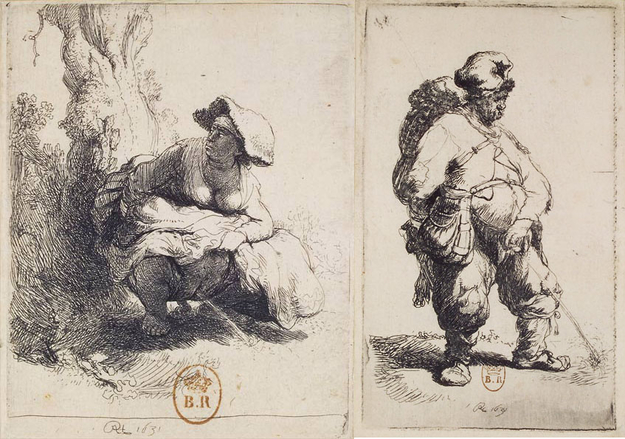Rembrandt's depiction of the pissing farmer's wife and the pissing man are not glaring examples of the artist's works, nor seventeenth century Dutch art in general. In fact, for a long time, the images of the pissing woman and the pissing man was viewed as works of more satirical value.
However, the provocative realism and the unobscured view of the characters' privates, is an example of Rembrandt's talent for capturing images of everyday life in the streets of Holland in 1631, when the etchings were made.
Rembrandt's unusual portraits, etchings, and historic and biblical paintings brought him international fame already in his own lifetime, and even his practice pieces and drawings were collected by art lovers of his time. To this day, Rembrandt is still revered as one of the greatest storytellers in the history of art, possessing an exceptional talent for depicting people in dramatic guises and various moods.
These specific images, and in particular the woman, can be seen as a commentary upon the carvings of Jacques Callot. In 1617 Callot made Capricci di varie Figure, in which he among other characters depicts a man crouching and pissing, in much the same position as Rembrandt's woman. Callot's man, however, does not look the least bit uncomfortable pissing in public. Perhaps this was Rembrandt's point, perhaps not. Either way, it makes a notable difference between the two depictions. Also, Rembrandt's pissing man doesn't look uncomfortable either.
This week is the opening of the Rijksmuseum's grand exhibition Late Rembrandt, showing the later works of the painter. Seeing as the pissing farmer's wife and the pissing man are from 1631 and thus a part of his early works, they most likely will not be part of the exhibition. Piss or no piss, however, Rembrandt is still one of the greats and probably worth a visit. The exhibition is open until May 17th 2015.
